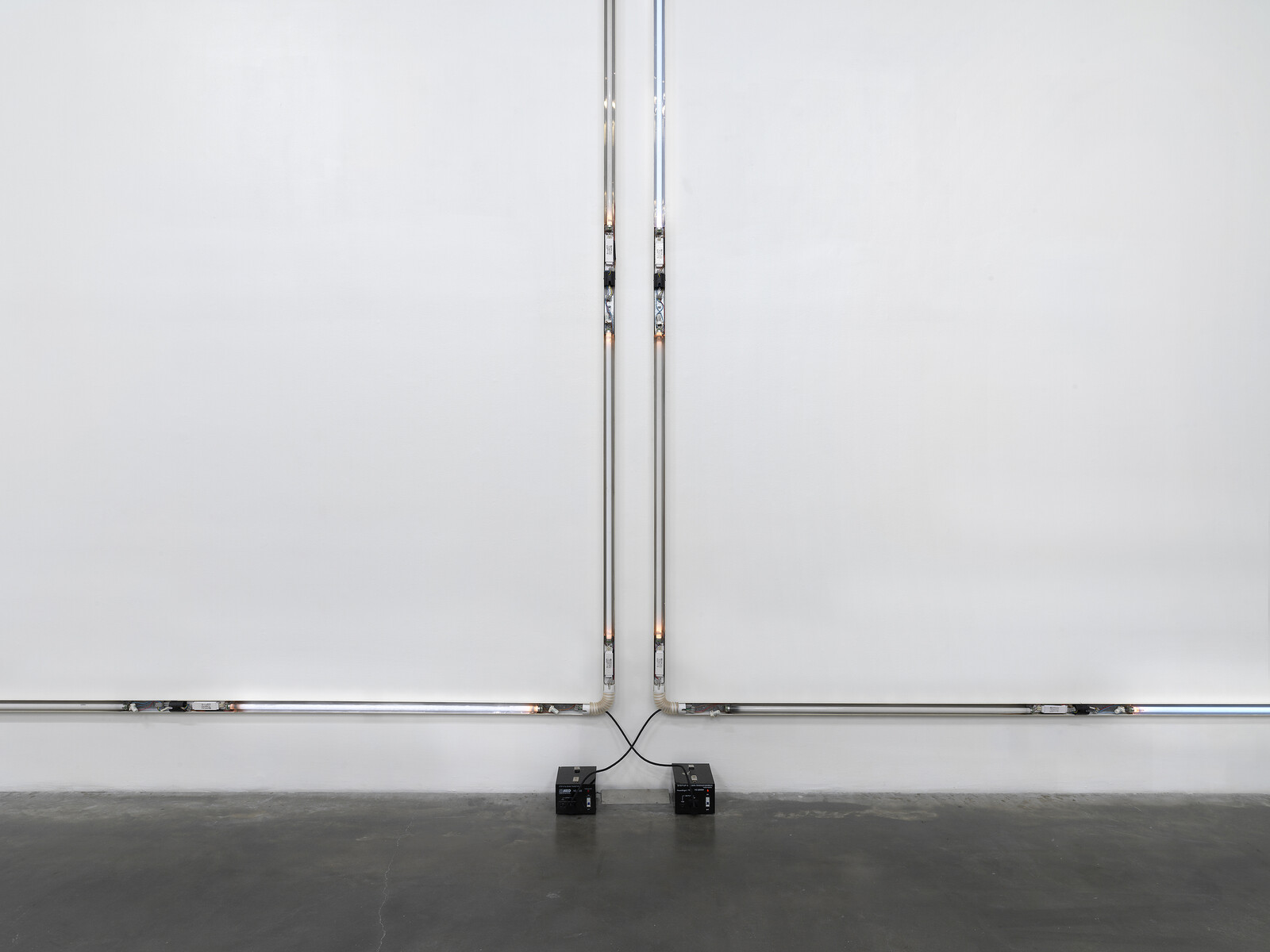The reopening of New York’s art institutions a little over a year ago was accompanied by vocal expressions of support for movements for racial and social justice, and an avowed intention to confront their own discriminatory practices. What has transpired since has mostly taken the form of a curatorial recalibration—of which “Soft Water Hard Stone” is symptomatic—in which exhibition-making has been used as a primary tool of critique and correction. However, despite their content, such exhibitions tend to leave the institutional infrastructure largely intact, all too often underplaying both the historic and continued complicity of the art establishment in perpetuating the conditions for colonialism, climate change, poverty, income inequality, displacement, and gentrification. Curated by the New Museum’s Margot Norton and Jamillah James of the Institution of Contemporary Art, Los Angeles, the fifth edition of the New Museum Triennial includes 40 artists from 23 countries. Borrowing its title from a Brazilian proverb—a commentary on the power of perseverance and persistence—“Soft Water Hard Stone” contemplates material and materiality, focusing primarily on Indigenous artists from the Americas working in various forms of sculpture, with a handful of video installations and a noticeable absence of photography. The assumption of a slow and steady path to resistance and transformation seems to justify the museum’s own approach.
Tomás Díaz Cedeño explores the relationship between material objects, humans, and the surrounding environment in 1000 años (2019). Five concrete sculptures hang by thick chains from the ceiling of the museum’s third-floor gallery and are connected to an irrigation system; water runs down the concrete, collecting in ceramic bases on the floor. The process of extraction is heavy, violent, and imposing, both on the landscape and on the bodies that carry it out and live in its environs, engulfed by it. Yet with time the water reshapes these sculptures, slowly, almost imperceptibly. Downstairs, Angelika Loderer’s sand sculptures Untitled (ribbons) (2021) capture a similar state of flux and transformation. The three metal frames hanging from the ceiling hold molding sand, an auxiliary material that is often used in metal casting because of its stability, yet which here appears fragile and temporary: Loderer’s experimentation with these materials creates a dialogue between the durable and the ephemeral. By contrast, in an installation of slender steel wool sculptures placed across from Loderer’s work, Bronwyn Katz attends to what she describes as “intervention in a place that is not extractive.” Part of her continued exploration of erased or disappearing languages, the minimalist posts that make up Xãe (2021) are inviting rather than abrasive, shimmering succulents that suggest a stubborn resistance to restrictive boundaries.
Many of the works in “Soft Water Hard Stone” are concerned with the reappropriation of materials, removing them from their usual contexts in order to cast their properties in new light. In her large installation HOLDINGS (2020–ongoing), near the exhibition’s opening, Nadia Belerique reimagines the long journey taken by large white shipping containers across the Atlantic Ocean, between the Azores and Toronto. Rather than carrying supplies back to family members in the Portuguese islands, the barrels here become self-contained vessels, personal time capsules offering windows into private worlds. Belerique creates a kaleidoscopic internal landscape, each barrel holding domestic paraphernalia—rubber gloves, photographs, small chairs—viewable from both sides through portholes. Some are ornately decorated, further distancing them from the containers’ original purpose—like screens separating disparate realities.
Likewise, by combining the personal and the industrial, Ima-Abasi Okon repurposes objects in a gesture of understated humor. In Put Something in the Air: The E-s-s-e-n-t-i-a-l Mahalia Jackson Blowing Up DJ Pollie Pop’s Chopped and Screwed Rendition of Wagner’s Ride of the Valkyries —Military-Entertainment Complex Dub [Jericho Speak Life!]*(Free of Legacy)* (2017) knee-high brass air vents, that appear to be part of the museum’s ventilation system, are embellished with the artist’s jewelry, suddenly shifting their function within the space. The lavishness of this minor addition is enhanced by the lush mahogany varnish coating the panel that shimmers above the vents. Jeneen Frei Njootli’s intervention in Fighting for the title not to be pending (2020) shares the same subtlety; the artist disperses their body weight in colored beads, scattered throughout the whole museum space. At times these tiny particles gather in conspicuous piles; elsewhere they appear discreetly in cracks and gaps, capturing the simultaneous presence and absence that shapes the reality of Indigenous peoples in the face of ongoing violence and displacement.
The futility of labor is captured in Gabriela Mureb’s Machine #3: belt (small) (2013/2021). Enclaved in a nook between two of the show’s three floors, the frantic whirling of a belt mounted around two metal pulleys is relentless and yet without effect, producing nothing more than an uninterrupted humming. Upstairs, Iris Touliatou attempts to ignite final sparks in the almost-defunct florescent light fixtures foraged from abandoned offices in Athens. Arranged in two large minimalist squares on the wall, the light bulbs in Untitled (Still Not Over You)(2021) flicker on and off randomly as they move towards their inevitable expiration. Rather than try to extend the life of these forms by replacing their bulbs, Touliatou accepts their unpredictable end: they may well die during the course of the show. There is something both hopeful and hopeless in this act of resuscitation; a labor of love in an effort to short-circuit the collapse of a system. In the latest instalment of her ongoing participatory drawings Class Drawing (2014–present), Clara Ianni brings a critique of labor conditions to the host institution. The site-specific Labor Drawing (New Museum) (2021) maps the routes taken by all employees from home to their shared workplace. The framed graphs quietly plot the class inequalities inherent in how one transverses the city, a critique that is especially pertinent given the ongoing accusations of exploitative working conditions that contradict the museum’s stated commitments to social justice.











